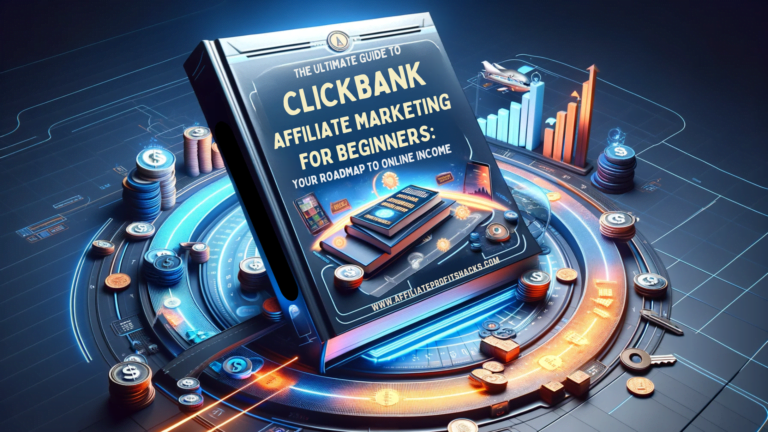Leveraging User-Generated Content for Brand Trust
Welcome to my article about leveraging user-generated content to build brand trust in your digital marketing!
Imagine this: You stumble upon a new brand while scrolling through your social media feed. Intrigued, you start researching the brand and its products, hoping to find authentic reviews and experiences. But all you find are glossy advertisements and carefully curated content that leaves you skeptical.
Now, let’s rewind to a different scenario. You come across a brand that showcases its content and features real customers sharing their experiences, opinions, and creativity. Suddenly, you’re hooked. Their user-generated content (UGC) feels relatable, genuine, and unbiased.
Wake up to Reality: Good Jobs are Scarce, and Debt is Rampant. Discover How to Secure YOUR Financial Future Against the Odds!

This is the power of leveraging user-generated content for brand trust. UGC provides a refreshing break from traditional marketing tactics and allows brands to connect meaningfully with their audience. It taps into the authenticity that consumers crave and establishes a genuine relationship based on trust.
Key Takeaways:
- User-generated content (UGC) is authentic and unpaid content created by customers.
- UGC is perceived as unbiased, relatable, and trustworthy by consumers.
- By leveraging UGC, brands can establish trust and create an authentic brand image.
- UGC acts as social proof, providing real-life examples and experiences.
- UGC can be utilized through various strategies, such as branded hashtags and influencer collaborations.
Understanding User-Generated Content (UGC)
User-generated content (UGC) encompasses a wide range of content voluntarily created and shared by consumers about a brand or its products/services. This includes reviews, testimonials, social media posts, videos, and photos. Its genuine, unfiltered nature sets UGC apart, making it a valuable asset for building trust and credibility.
Consumers trust UGC because it comes directly from their peers, providing real-life examples and experiences that validate a brand’s claims. When potential customers see reviews, testimonials, or social media posts from other users, they can relate to their experiences and feel more confident in their purchasing decisions.
Customer reviews are a prime example of UGC that holds significant sway in driving brand recognition and trust. Positive reviews highlight a brand’s strengths and build credibility, while negative reviews offer opportunities for improvement and showcase transparency.
Testimonials, another form of UGC, act as powerful trust signals. Sharing the direct experiences of satisfied customers reinforces a brand’s authenticity and demonstrates its ability to deliver on its promises.
The reviews and testimonials from fellow consumers give me the reassurance I need when making a purchasing decision. Seeing their firsthand experiences and genuine opinions helps me trust the brand and feel confident in my choice.
Additionally, social media posts play a significant role in UGC. When customers share their experiences, stories, or photos on social media platforms, they provide real-life examples that resonate with others. These posts allow for organic engagement and contribute to building a community around the brand.
The unfiltered nature of UGC makes it highly influential. It provides a raw and authentic perspective that traditional advertising may lack. It creates a sense of relatability for consumers, bridging the gap between the business and its customers.
The Role of User-Generated Content in Building Brand Trust
Trust is the foundation upon which successful brands are built. In today’s digital age, where consumers are bombarded with marketing messages, establishing brand credibility is more crucial than ever. This is where user-generated content (UGC) comes into play.
UGC acts as powerful trust signals, providing potential customers with real-life examples and experiences validating a brand’s claims. It humanizes the brand and fosters a sense of authenticity, making it a potent tool for building trust. When users see others like them engaging with a brand and sharing positive experiences, it creates a sense of trust and credibility.
Wake up to Reality: Good Jobs are Scarce, and Debt is Rampant. Discover How to Secure YOUR Financial Future Against the Odds!
One of the most effective forms of UGC in building brand trust is through user reviews and customer testimonials. These genuine expressions of satisfaction or disappointment provide valuable insights for prospective customers. When users can see authentic reviews from their peers, it helps them make informed purchasing decisions, increasing their confidence in the brand.
I was initially skeptical about trying this brand, but after reading the positive user reviews and testimonials, I felt more confident in my purchase decision. It really helped me trust the brand and believe in their claims.
By leveraging user reviews and customer testimonials, brands can showcase their commitment to customer satisfaction and build a reputation for reliability and quality. This social proof strengthens brand credibility and instills confidence in potential customers.
Furthermore, UGC creates an emotional connection with consumers. User-generated content provides a personal touch and allows users to envision themselves using the brand’s products or services. This emotional connection nurtures trust and loyalty as customers feel more connected to the brand and its values.
Brands that actively promote and share UGC are willing to engage with their customers and involve them in the brand experience. This engagement further enhances brand trust and establishes a loyal community of advocates.
Benefits of User-Generated Content for Building Brand Trust:
- User reviews and customer testimonials act as trust signals, validating a brand’s claims.
- UGC humanizes the brand and fosters a sense of authenticity.
- Authentic user experiences create emotional connections with potential customers.
- Active promotion of UGC demonstrates brand engagement and commitment to customers.
By incorporating UGC into their marketing strategy, brands can build trust, enhance credibility, and create a loyal community of engaged customers.
Different Strategies of User-Generated Content
When leveraging user-generated content (UGC), brands can employ several effective strategies to enhance their credibility and engage with their community. These strategies include:
- Creating a Branded Hashtag: Encouraging users to share their content using a branded hashtag promotes brand visibility, generates a sense of community, and encourages others to contribute.
- Sharing UGC on Social Media Platforms: Social media platforms provide an ideal space to showcase user-generated content. By featuring UGC, brands can demonstrate authenticity and build trust with their audience.
- Requesting and Featuring Testimonials: Testimonials from satisfied customers act as powerful social proof and can significantly influence prospective buyers. By actively seeking and featuring testimonials, brands can establish credibility and showcase their customers’ positive experiences.
- Collaborating with Influencers: Partnering with influencers who align with the brand’s values can help expand its reach and influence. Influencers can create and promote UGC, providing valuable social proof to their followers.
- Engaging with UGC: Actively engaging with user-generated content is crucial for fostering a sense of community and trust. Responding to comments and concerns promptly shows the brand’s commitment to its customers and encourages further interaction.
How Can You Monitor and Manage User-Generated Content?
When it comes to user-generated content (UGC), monitoring and managing it effectively is crucial for maintaining a positive brand image and ensuring compliance with copyright and legal requirements. By following clear guidelines and implementing moderation processes, you can filter out inappropriate or irrelevant material, creating an engaging and trustworthy platform for your audience.
Establishing clear guidelines and terms of use for UGC submissions is the first step in maintaining quality standards. These guidelines should outline what types of content are acceptable and what may be deemed offensive or inappropriate. Communicating your expectations will create a positive user experience and prevent legal issues.
Implementing moderation processes is essential for reviewing and approving UGC before it goes live. This allows you to ensure that the content aligns with your brand values and guidelines. By actively engaging with UGC through monitoring and approving content, you showcase your commitment to customer satisfaction and foster a sense of community.
Encouraging users to report violations or offensive content is another crucial aspect of managing UGC. Providing a seamless reporting system allows your community to participate in maintaining a safe and inclusive environment. Promptly addressing reported issues demonstrates your dedication to resolving concerns and respecting your users’ feedback.
Wake up to Reality: Good Jobs are Scarce, and Debt is Rampant. Discover How to Secure YOUR Financial Future Against the Odds!
Leveraging moderation tools or services can streamline the content review process, saving time and effort. These tools automate content screening, flag potentially problematic material, and ensure copyright and legal guidelines compliance. Additionally, utilizing social listening tools allows you to monitor social media platforms for mentions of your brand and promptly address any issues.
Regularly auditing UGC is essential to maintaining compliance and keeping platforms engaging. Stay updated on legal regulations regarding UGC and make any necessary adjustments to your moderation processes and guidelines accordingly. By staying proactive and informed, you can ensure the continued success of your UGC initiatives.
In conclusion, monitoring and managing UGC involves establishing clear guidelines, implementing moderation processes, and actively engaging with your community. You can maintain a positive brand image and create an engaging platform that fosters trust and authenticity by utilizing moderation tools, social listening, and staying updated on copyright and legal issues.
The Benefits of User-Generated Content for Brand Trust
User-generated content (UGC) offers many benefits in building brand trust. One key advantage of UGC is its ability to establish trust because it comes directly from everyday users. This makes it relatable, believable, and more likely to be peer-approved. When potential customers see UGC created by their peers, they are more inclined to trust the brand and its offerings.
In addition to building trust, UGC also enhances engagement and shareability. It allows brands to reach a wider audience through the power of social sharing. Users creating and sharing UGC expands the brand’s reach and increases its visibility. This generates more brand awareness and encourages others to engage with the content, further amplifying the brand’s message.
Furthermore, UGC is an incredibly cost-effective marketing strategy compared to creating branded content from scratch. Instead of investing resources in producing elaborate advertisements, brands can leverage the organic content created by their customers. This saves on production costs and increases the authenticity of the brand’s messaging.
Businesses improve their authenticity by showcasing real people engaging with the brand through UGC. When customers see others enjoying and benefiting from a product or service, it increases their trust and confidence in the brand. UGC serves as social proof, validating the brand’s claims and highlighting its positive impact on real customers.
Moreover, UGC contributes to the diversification of content and enhances SEO value. By incorporating UGC into marketing efforts, brands add more indexed content and targeted keywords to their online presence. This boosts their visibility in search engine results and increases organic traffic to their website. As search engines prioritize fresh and user-generated content, UGC helps enhance the brand’s SEO efforts.
User-generated content (UGC) is a valuable asset for building brand trust. It is more trustworthy, engaging, and cost-effective than branded content. By leveraging UGC, brands can showcase authenticity, reach a wider audience, and increase their SEO value.
How to Increase User-Generated Content for Your Brand
To enhance your brand’s user-generated content (UGC) and engage customers, there are several effective strategies you can implement:
- Send Feedback and Review Emails: Regularly ask customers for feedback and encourage them to leave reviews about their experiences with your brand. This generates valuable UGC and shows that you value their opinion.
- Hold Contests on Social Media: Create contests that prompt customers to create and share UGC, such as photos or videos related to your brand or products. Offer incentives for participation, like discounts or giveaways, to encourage more submissions.
- Repurpose User-Generated Content: Take existing UGC and repurpose it into different formats, such as creating blog posts, videos, or social media graphics. You can extend its reach and impact by showcasing this content differently.
- Partner with Influencers: Collaborate with influencers in your industry or niche to promote your brand and encourage their followers to create UGC. Influencers can reach a wider audience and inspire trust and engagement.
- Utilize Hashtags: Create branded hashtags that encourage customers to share their experiences and content related to your brand. This helps categorize and promote UGC, making it easier for others to discover and engage with.
- Incorporate Wishlists: Implement wishlists on your website or social media platforms to allow customers to curate their favorite products or experiences. This fosters a sense of community and trust while also generating UGC around the products or services.
Implementing these strategies can successfully increase your brand’s UGC. Remember to actively engage with the generated content, respond to comments, and showcase your appreciation for your customers’ contributions.

The Power of User-Generated Content Examples
User-generated content (UGC) examples demonstrate its immense impact on building brand trust. By incorporating various forms of UGC, brands can tap into the power of customer reviews, user-generated photo reviews, video reviews, photo contests, influencer content, campaign hashtags, and wishlists.
Customer Reviews
Customer reviews serve as social proof, allowing potential customers to make informed decisions based on the experiences of others. These unbiased opinions provide valuable insights and instill confidence in the brand, enhancing trust and credibility.
Wake up to Reality: Good Jobs are Scarce, and Debt is Rampant. Discover How to Secure YOUR Financial Future Against the Odds!
User-Generated Photo Reviews
User-generated photo reviews elevate engagement and immerse potential customers in the brand experience. Captivating, high-quality imagery shared by users showcases the product in real-life situations, offering a visual testament to its benefits and quality.
User-Generated Video Reviews
User-generated video reviews take engagement to the next level, allowing for more personal and authentic connections. Through videos, customers can share their experiences, showcase product features, and demonstrate the value they have received, effectively influencing others in the process.
Photo Contests
Photo contests encourage user participation and generate valuable content. By inviting customers to submit their best photos featuring the brand’s products or services, businesses create a sense of engagement and community and acquire a collection of user-generated photos for marketing materials.
Influencer Content
Influencer content can greatly enhance brand visibility and credibility by leveraging the reach and influence of popular individuals. When influencers create and share content featuring the brand, their followers are more likely to trust and engage with it, increasing customer loyalty and conversions.
Campaign Hashtags
Campaign hashtags provide a means to categorize and track UGC, making it easier for brands to identify and curate content related to specific campaigns or initiatives. By encouraging customers to join in using campaign hashtags, brands foster a sense of community and amplify the reach of UGC.
Wishlists
Wishlists allow brands to establish direct contact with customers and gain insights into their preferences. By showcasing what others are interested in, wishlists create a sense of inspiration and aspiration, encouraging customers to engage with the brand and explore its offerings further.
These user-generated content examples highlight how brands can leverage UGC to build trust, engagement, and authenticity. From customer reviews to photo contests, influencers to campaign hashtags, and wishlists to video reviews, UGC provides a powerful opportunity for brands to connect with their audience and establish a strong brand reputation.
Conclusion
User-generated content (UGC) is pivotal in building brand trust and credibility. By leveraging UGC, your business can establish an authentic and engaging brand image while creating a sense of trust with your target audience. UGC acts as social proof, providing real-life examples and experiences that validate your brand’s claims. This type of content is perceived as unbiased and relatable, making it a powerful tool for building brand trust.
Effective strategies to monitor and manage UGC are crucial for maintaining a positive brand image. Establishing clear guidelines and moderation processes ensures that only appropriate and relevant content is shared. Actively engaging with UGC by responding to comments and concerns showcases your commitment to customer satisfaction and maintaining the authenticity of the content.
Incorporating UGC into your marketing efforts can enhance customer engagement and foster a vibrant community around your brand. UGC strengthens your brand’s authenticity and improves brand awareness by encouraging sharing and reaching users’ networks. Additionally, UGC diversifies your content and boosts engagement on social media platforms. You are taking a significant step toward building a strong and trustworthy brand image by leveraging user-generated content for brand trust.
Thank you for reading my article “Leveraging User-Generated Content for Brand Trust.” I hope you found it informative and helpful!
For more insights into digital marketing, read this article: Digital Marketing Masterclass: Take Your Business To The Next Level.







